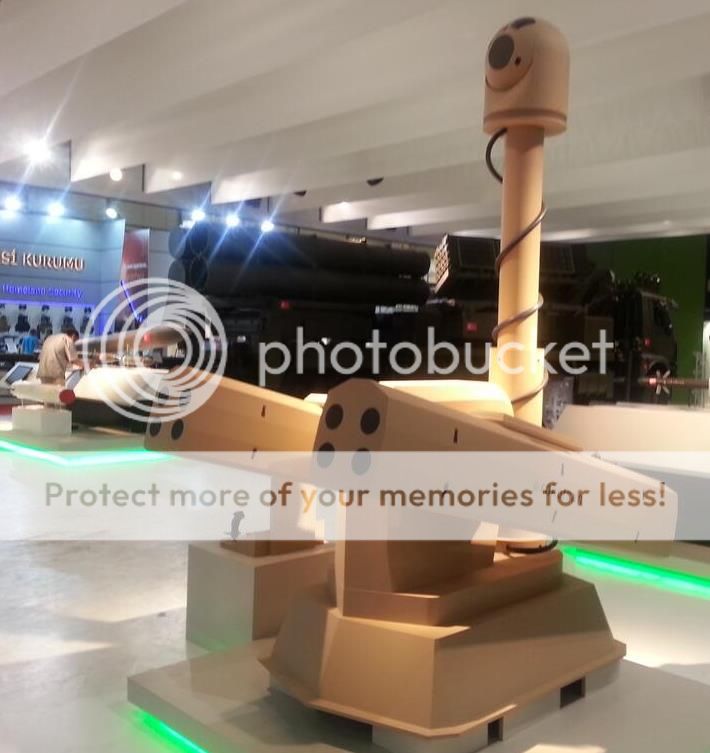cabatli_53
ELITE MEMBER

- Joined
- Feb 20, 2008
- Messages
- 12,808
- Reaction score
- 62
- Country
- Location
UAE set to use CiRiT versatility to the full
Turkey's Roketsan has confirmed that "several thousand" of its 2.75 in CiRiT semi-active laser guided missiles have been delivered to Turkey and the United Arab Emirates (UAE).
Early in 2013 the UAE ordered the CiRiT for a number of applications, with the first deliveries made later in that year to meet an urgent operational requirement (UOR).
At the time of ordering no details of the UAE's planned uses for the CiRiT were disclosed, but these are now understood to include a four round reloadable launcher for use on fixed-wing aircraft and helicopters, and a pedestal-mounted version for ground-to-ground applications.
UAE's missiles will equip its Air Tractor turboprop AT-802 Block 1/2 armed reconnaissance/light strike aircraft, 24 of which have been supplied; six of these have subsequently been transferred to Jordan.
This aircraft can be fitted with a variety of weapons, including four launchers, each of which can carry four CiRiT missiles. Targets are designated by on board or ground-based laser systems.
UAE has ordered the ground-based CiRiT variant, in both the trailer-mounted and semi-permanent installation configurations.
These typically feature pods of four CiRiT missiles on either side of a mast-mounted sensor unit, which consists of a thermal imager, day camera, laser rangefinder and laser designator. The system has a remote control launch capability. The pedestal-mounted version can also be configured with Roketsan's Mizrak laser-guided missiles, which have a more powerful warhead.
The CiRiT missile has a conventional layout with a passive SAL seeker in the nose followed by the control unit - which has four swing-out control surfaces - and the guidance section, including the power source. To the rear is the multi-purpose warhead (MPW) that has combined anti-armour and anti-personnel incendiary effect, and finally the rocket motor.
The typical target set for the CiRiT is light armoured vehicles and trucks.
Roketsan has confirmed that the solid propellant rocket motor and its warhead are insensitive munition (IM) compliant, with the former having a reduced smoke signature.
The engagement cycle for the operation of the CiRiT sees the gunner designate the target prior to the missile being launched; post-launch the rocket relies on a MEMS-type inertial measurement unit combined with terminal laser homing.
According to Roketsan, the CiRiT has a minimum range of 1,500 m and a maximum range of 8,000 m. During recent trials involving a mix of stationary and moving targets, the missile achieved a 100% success rate.
The first application of production CiRiT missiles for the Turkish Land Forces Command is with the AH-1P Cobra and AH-1W SUPER Cobra attack helicopters; this will be followed by deployment with the T-129 attack helicopter.
Turkey's Roketsan has confirmed that "several thousand" of its 2.75 in CiRiT semi-active laser guided missiles have been delivered to Turkey and the United Arab Emirates (UAE).
Early in 2013 the UAE ordered the CiRiT for a number of applications, with the first deliveries made later in that year to meet an urgent operational requirement (UOR).
At the time of ordering no details of the UAE's planned uses for the CiRiT were disclosed, but these are now understood to include a four round reloadable launcher for use on fixed-wing aircraft and helicopters, and a pedestal-mounted version for ground-to-ground applications.
UAE's missiles will equip its Air Tractor turboprop AT-802 Block 1/2 armed reconnaissance/light strike aircraft, 24 of which have been supplied; six of these have subsequently been transferred to Jordan.
This aircraft can be fitted with a variety of weapons, including four launchers, each of which can carry four CiRiT missiles. Targets are designated by on board or ground-based laser systems.
UAE has ordered the ground-based CiRiT variant, in both the trailer-mounted and semi-permanent installation configurations.
These typically feature pods of four CiRiT missiles on either side of a mast-mounted sensor unit, which consists of a thermal imager, day camera, laser rangefinder and laser designator. The system has a remote control launch capability. The pedestal-mounted version can also be configured with Roketsan's Mizrak laser-guided missiles, which have a more powerful warhead.
The CiRiT missile has a conventional layout with a passive SAL seeker in the nose followed by the control unit - which has four swing-out control surfaces - and the guidance section, including the power source. To the rear is the multi-purpose warhead (MPW) that has combined anti-armour and anti-personnel incendiary effect, and finally the rocket motor.
The typical target set for the CiRiT is light armoured vehicles and trucks.
Roketsan has confirmed that the solid propellant rocket motor and its warhead are insensitive munition (IM) compliant, with the former having a reduced smoke signature.
The engagement cycle for the operation of the CiRiT sees the gunner designate the target prior to the missile being launched; post-launch the rocket relies on a MEMS-type inertial measurement unit combined with terminal laser homing.
According to Roketsan, the CiRiT has a minimum range of 1,500 m and a maximum range of 8,000 m. During recent trials involving a mix of stationary and moving targets, the missile achieved a 100% success rate.
The first application of production CiRiT missiles for the Turkish Land Forces Command is with the AH-1P Cobra and AH-1W SUPER Cobra attack helicopters; this will be followed by deployment with the T-129 attack helicopter.
















